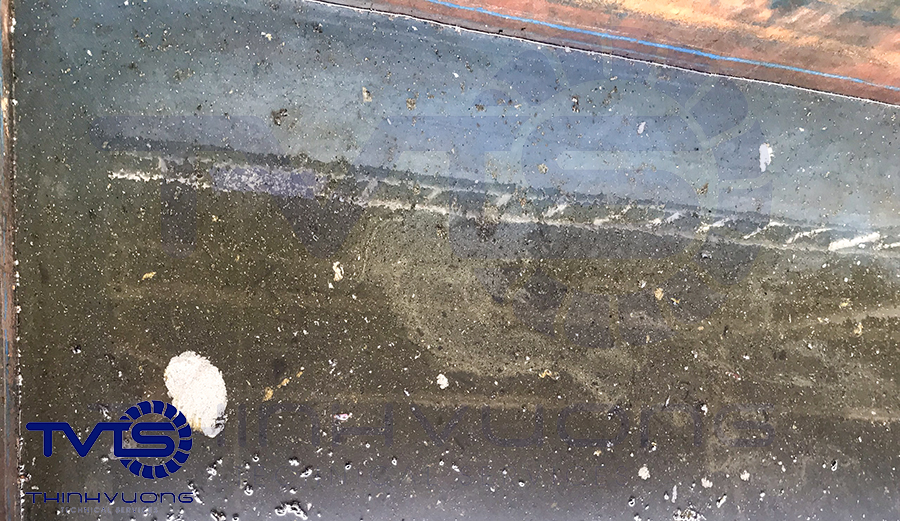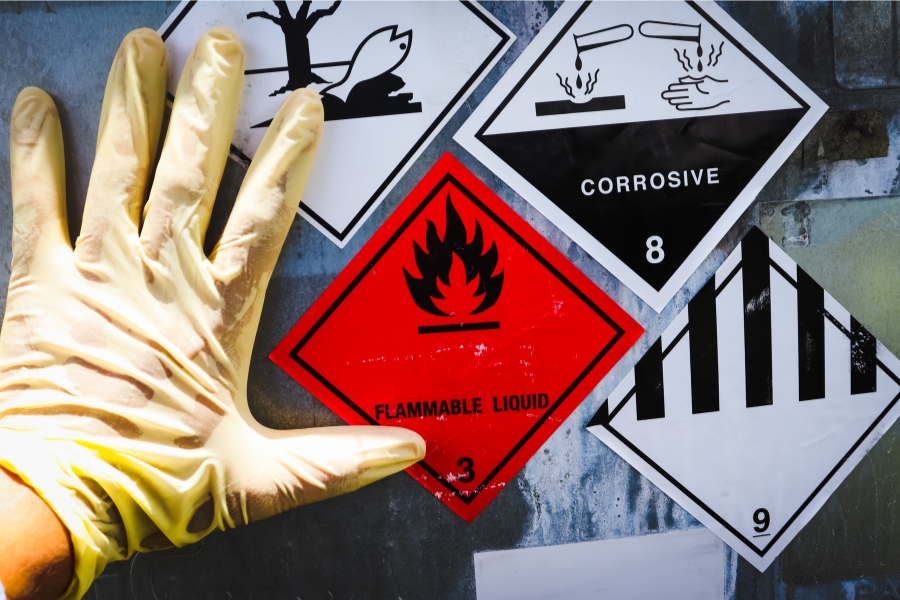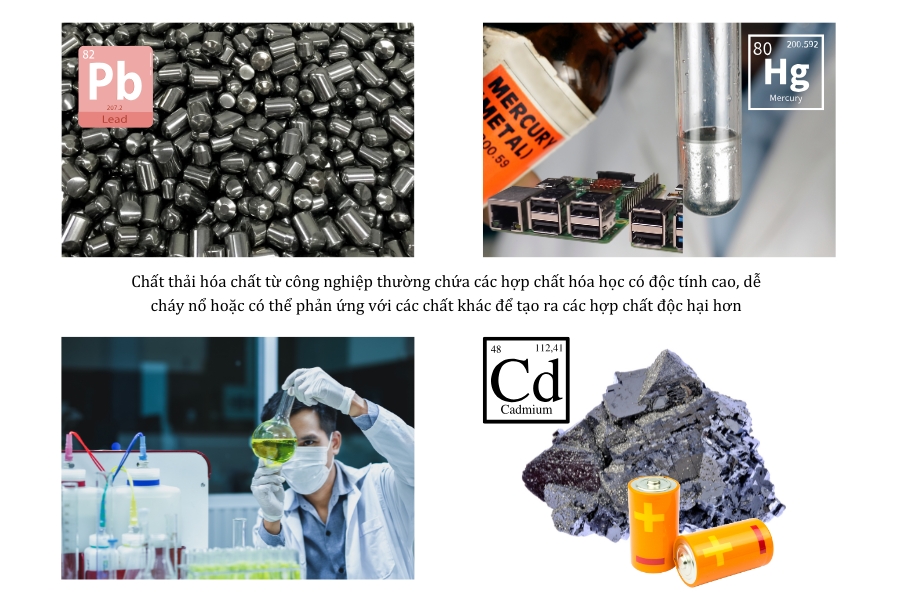Nội dung
1. Introduction to hazardous waste and industrial liquid waste
Today, as industrialization and modernization grow rapidly. The problem of hazardous waste treatment has become one of the top priorities of businesses and governments. Hazardous waste is not only contained in household waste, but mainly arises from industries. Some industries mentioned are: chemicals, oil and gas, and metal production, …. In which, the most common is industrial liquid waste, including hazardous liquid waste and toxic wastewater containing dangerous compounds.

The emission of these types of hazardous liquid waste has a serious impact on the environment. Especially when containing heavy metals and toxic chemicals that are highly toxic. The issue of hazardous waste management and the application of toxic wastewater treatment technologies is very necessary. In order to protect the environment, ecosystems, natural resources and human health.
2. Classification of hazardous waste and industrial liquid waste
Hazardous waste and hazardous liquid waste are still discharged into the environment every day. Through production, industrial and domestic activities. Classification of hazardous waste helps to provide appropriate treatment solutions, ensuring safety for the environment and public health.
The following are some types of hazardous waste:
2.1 Industrial liquid waste
Industrial liquid waste is a form of liquid waste discharged during the industrial production process. This type of waste includes chemical compounds, solvents, and other pollutants. Typically in industries such as chemicals, mining, oil and gas processing and food, …. Liquid waste can contain toxic compounds such as heavy metals, organic substances that are difficult to decompose and organic solvents.
2.2 Liquid hazardous waste and liquid waste from the chemical industry
Liquid hazardous waste is often highly toxic, corrosive, flammable or contains toxic chemicals. In particular, in the chemical industry, liquid waste contains chemical compounds that can cause dangerous chemical reactions when exposed to the environment.
Liquid waste from the chemical industry also includes compounds that are acidic, strong bases, organic solvents, and waste that can change the physical and chemical properties of water. These components cause water pollution if not treated properly.

2.3 Classification of biological hazardous waste, hazardous waste from production and household hazardous waste
-
Biohazardous waste:
Often generated from medical facilities, laboratories, and health care facilities. Biological waste includes: fluids, blood, and organic compounds, …. They carry dangerous pathogens, capable of infecting or harming humans and animals.
-
Hazardous waste from production:
Generated from industrial production processes such as: metal processing, paper and pulp production, textile dyeing, pharmaceutical production, etc. This type of waste may contain heavy metals, toxic chemicals or organic compounds that are highly persistent in the environment.
-
Household hazardous waste:
Generated from daily human activities. Such as waste: electronics, batteries, fluorescent lamps, and products containing toxic chemicals (detergents, paints, pesticides, etc.). If household hazardous waste is not properly treated, it will pollute the land, water and environment.
3. Hazardous components in industrial liquid waste
Industrial liquid waste contains many hazardous components due to the special nature of production. It requires thorough treatment methods to improve production efficiency and minimize environmental impacts. Below are some common hazardous components in industrial liquid waste:
3.1 Chemical waste and wastewater containing heavy metals
Chemical waste often contains highly toxic chemical compounds. They are flammable or explosive or can react with other substances to create more toxic compounds. Heavy metals such as lead, mercury, cadmium, and chromium are common components in wastewater from the mining, electronics manufacturing, and metal plating industries. When these heavy metals enter the water source, they will affect the ecosystem. Then accumulate in the body of living organisms, causing serious harm when exposed for a long time.

3.2 Toxic chemicals and toxic waste
Many types of toxic chemicals are found in industrial liquid waste such as:
- Organic Solvents
- Preservatives and Industrial Additives
Volatile Organic Compounds.
Các chất này khi xâm nhập vào môi trường có khả năng làm ô nhiễm nguồn nước, gây ngộ độc cho động thực vật. Ngoài ra, chúng có thể gây ra các vấn đề về sức khỏe như dị ứng, ung thư và các rối loạn về hô hấp và da liễu ở con người.These substances, when entering the environment, can pollute water sources and poison animals and plants. In addition, they can cause health problems such as allergies, cancer, and respiratory and dermatological disorders in humans.
3.3 Oily wastewater and other hazardous wastes
Oily wastewater is generated from industries such as oil refining, metal processing, and mechanical engineering. When discharged into the environment, oil and industrial grease will form a film on the water surface, preventing oxygen exchange and affecting the life of aquatic species.
In addition, oily wastewater may also contain other toxic additives, increasing the toxicity of the wastewater. Other types of hazardous waste include:
- Radioactive substances
- Pesticides
- Food preservatives,….
Given the specific information about liquid waste and its hazards. Finding solutions to thoroughly treat hazardous waste is extremely necessary. Current liquid waste treatment technologies are no longer effective. Because the complexity in the composition and properties of wastewater is increasing.
Understanding the needs of the market. TVTS is equipped with a small capacity hazardous liquid waste treatment system (Pilot). The Pilot will run a test at the factory when requested. Then evaluate the effectiveness of the technology for each type of wastewater with different properties. From there, appropriate solutions and conclusions are given for each factory.



